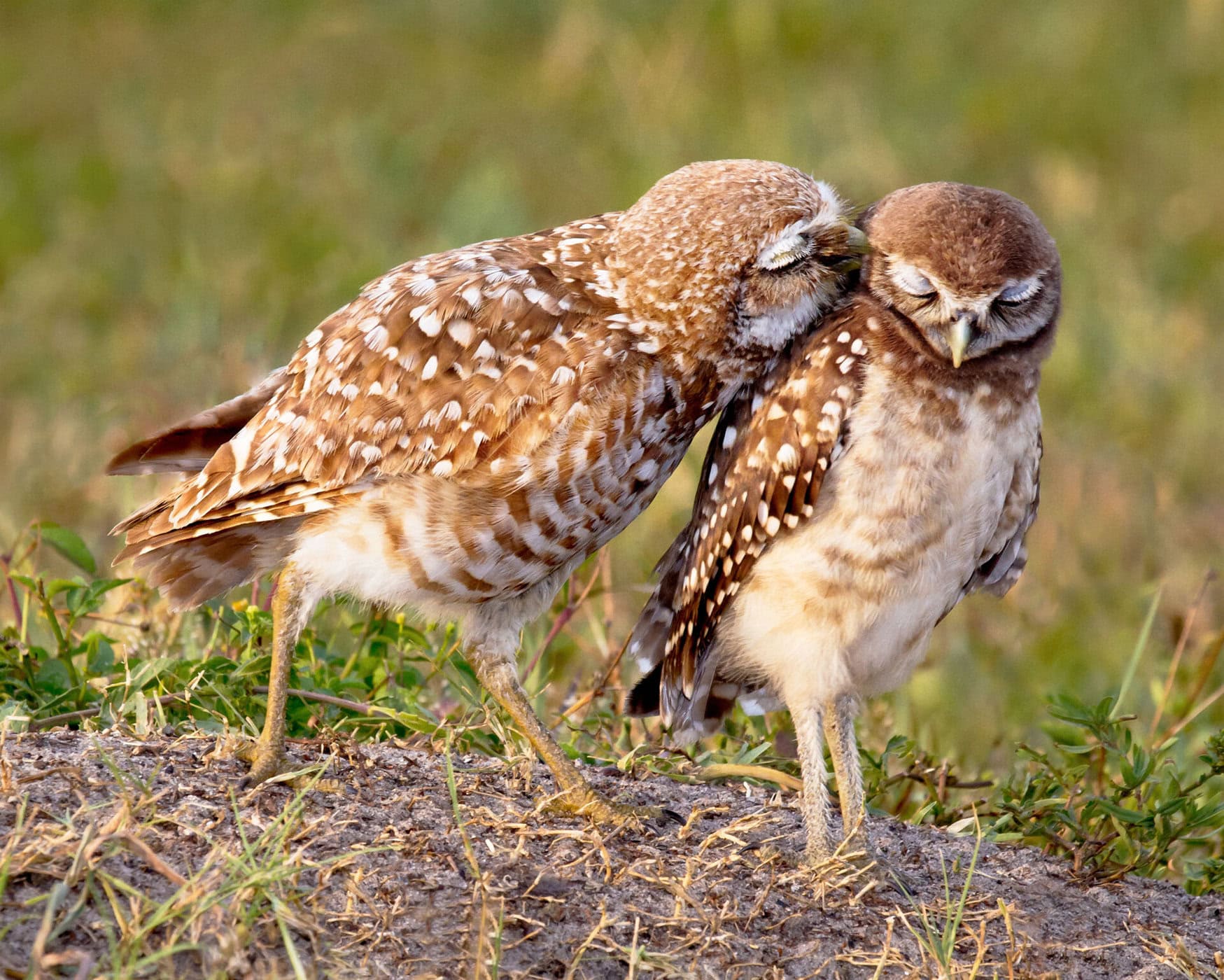Burrowing Owls

The Western Burrowing Owl (Athene cunicularia) is a small, ground-dwelling species of owl found in North and South America. Native to open landscapes with low vegetation such as grasslands, prairies, and deserts, it nests in underground burrows abandoned by other animals.1 Southern populations of the Burrowing Owl are year-round residents; northern populations are migratory and fly south to overwinter in warmer conditions.
Human development-driven habitat loss coupled with population declines of burrowing mammals poses a serious threat to Burrowing Owl populations. Total Burrowing Owl numbers have dropped by at least 33% since 1965. The decline has been particularly steep in California, where numbers have fallen by 60% and coastal breeding populations have been nearly extirpated.2 As a result, the Burrowing Owl has recently been designated as a candidate species for the threatened and endangered list under the California Endangered Species Act (CESA). As a candidate species, Burrowing Owls have the full protection of CESA while the listing process is finalized.
Before extensive urban development, the San Francisco Bay Area’s coastal prairies and grassland provided habitat for both resident and migratory populations of Burrowing Owls. Now, however, the region hosts fewer than 25 resident breeding pairs and a dwindling number of overwintering birds.3 Protecting the remaining habitat is critical to sustaining their populations and preventing local extinction in the Bay Area.
Cesar Chavez Park in Berkeley has remained a Burrowing Owl overwintering ground for over three decades. In 2011, a fence was erected around the Burrowing Owl habitat to protect the owls from human disturbance. Burrowing owls are most likely to nest on open land with little to no visual obstruction4, and the low height and minimalistic design of the fence minimizes habitat disturbance to the owls while serving as a symbolic reminder for parkgoers – especially dog walkers – to be mindful of Burrowing Owl grounds. Although a more robust fence could offer more protection against people and their pets, it would inadvertently compromise Burrowing Owl safety by providing a perching area for known avian predators5 and obstructing the owls’ line of sight, which could discourage them from overwintering in Cesar Chavez Park.
Golden Gate Bird Alliance has worked with the Berkeley Recreation, Parks and Waterfront Department since 2009 to maintain quality habitat for Burrowing Owls at Cesar Chavez and to monitor Burrowing Owl populations along the Berkeley waterfront. Our data, collected with the help of our volunteer monitoring program, has helped us better understand local Burrowing Owl needs and raise public awareness about their conservation. If you are interested in participating in our monitoring program, please contact info@goldengatebirds.org.
If you see a Burrowing Owl at your local park or natural area, feel free to observe it from a distance, but please do not approach it. You can help contribute to research and conservation efforts by logging your observations on citizen science platforms such as eBird and iNaturalist. Thank you for helping protect our Bay Area Burrowing Owls!
- https://www.fws.gov/species/burrowing-owl-athene-cunicularia ↩︎
- https://biologicaldiversity.org/w/news/press-releases/state-protections-sought-for-vanishing-california-burrowing-owls-2024-03-05/ ↩︎
- https://www.sfgate.com/local/article/rare-animal-brink-extinction-bay-area-19367930.php ↩︎
- Thiele, Jason P., Kristel K. Bakker, and Charles D. Dieter. “Multiscale nest site selection by Burrowing Owls in western South Dakota.” The Wilson Journal of Ornithology 125.4 (2013): 763-774. ↩︎
- https://birdsoftheworld.org/bow/species/burowl/cur/demography#mort ↩︎

